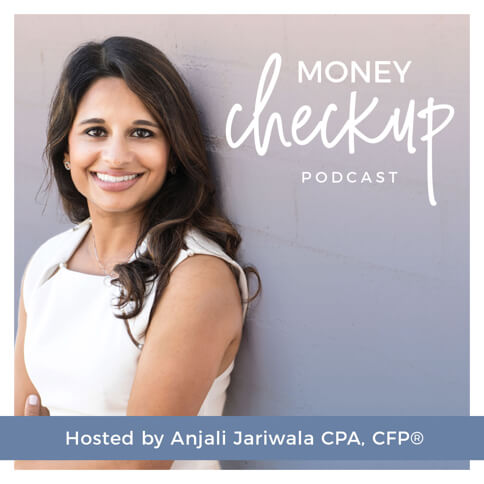Real estate is a unique investment class. Unlike stocks and bonds, it’s tangible. Investors can actually see and touch their property. That can make this asset class is more appealing for people.
Further, we know that everyone needs a place to live — so while the housing market isn’t always perfectly predictable, there should always be demand for homes.
As a financial tool, real estate investments offer lots of advantages. Well-qualified clients can take advantage of interest-only loans, allowing them to make smaller payments and create favorable cash-on-cash returns. Additionally, rental income is reliable — often more so than the stock market.
Finally, real estate offers two different income streams — monthly income from each occupied property, and when a property is sold, the benefits of appreciation.
In early 2019, Bay Area real estate agent Christina Woo joined me on Money Checkup to talk about her insights into real estate investing. Christina earned an MBA from Harvard Business School and spent years at Morgan Stanley as an analyst before she purchased her first investment properties in 2005. Today, she’s a leading agent in one of the country’s most competitive markets. Listen back to our conversation for additional insights.
Finding the right investment property
The right investment property is different for every investor. Some hope to generate as much monthly cash flow as possible. Others invest because they expect property to appreciate. Some families want to own a vacation home, but want to use it to generate vacation rental income while they’re away. The right property is the one that aligns most closely with your financial goals.
The right investment property does not have to be in your home city or even your state — and in fact, some real estate investors prefer properties far away. Christina, for example, owns property in nine different states. She found that when she owned property locally, she tried to manage it herself, from posting photos on Craigslist to finding tenants to performing maintenance. Now, she pays property managers to do all of that for her. Although buying property out of state can feel stressful, you can set it up in a way that makes it less stressful.
To evaluate a specific investment property, try to calculate its cash-on-cash return. The cash on cash return calculates the amount of cash you earned on the amount of cash you invested. Start with the amount of cash you’ve invested in the asset — that is, the down payment and costs to renovate. Then, compare the property’s net income, which is the money you keep after mortgage payments, taxes, insurance, homeowners association fees, property management fees, and other expenses. Make sure to also include vacancy in the net income amount.
For example, say you put $100,000 down on a $500,000 house. The house generates $1,500 per month, or $18,000 per year, in net operating income. The home has an 18% cash-on-cash return.
Additionally, when evaluating investment properties, reviewing capitalization rates or cap rates is important. The cap rate helps determine the profitability of the property and excludes the impact of financing, because mortgage payments are not factored into this calculation. The cap rate is calculated by taking the net operating income and dividing it by the purchase price.
Cap rates are a good tool to compare multiple properties to put them on equal footing. Both the cap rate and cash on cash returns are important numbers to calculate when deciding whether to purchase an investment property or not.
Tax planning for real estate investments
Capital gains taxes apply to profits from the sale of assets, including real estate assets. But real estate offers a number of opportunities for tax planning that can help you reduce your tax burden.
For example, if you sell a home that was your primary residence — meaning that you lived there for two of the last five years — you can exclude up to $250,000 of capital gains if you are single and $500,000 if you are married. Note that the exclusion does not work as favorably if you try to take an investment property and then convert it as a primary residence in order to obtain the capital gains exclusion.
For a property that was never your primary residence, you can use a 1031 exchange to defer capital gains tax. In a 1031 exchange, the investor take the proceeds from the sale of a property and invests them directly into another similar property, with the help of a 1031 accommodator.
When you sell an investment property, the proceeds from that sale are transferred to the 1031 accommodator instead of to you. Then you have 45 days to identify a replacement property of equal or greater value and 180 days to close on it. If the exchange is executed successfully, you can defer all of your capital gains taxes on the sale of the first property, because you did not actually take possession of those gains.
There are some tax advantages if you inherit a property as well. Currently, when the owner of a property dies, that property receives a step up in basis. This means that the owner’s heirs take possession of the property at the fair market value assessed at the time of the owner’s death. If you purchase a property today for $400,000 and it appreciates to $1 million by the time of your death, then your heirs inherit a property worth $1 million — and do not have to pay capital gains taxes on the $600,000 in value the property gained, even if they choose to liquidate the asset.
It’s also possible to layer these tax maneuvers. If a single person has lived in a home for two of the last five years and chooses to sell it, she can exclude $250,000 of profit from capital gains taxes. If there is a gain above $250,000, she can do a 1031 exchange with the remaining cash. Then, a few years later, she can use another 1031 exchange to liquidate that asset and purchase a more valuable one.
In this way, the same dollars can keep cycling through real estate investments, generating passive rental income and requiring only limited spending on capital gains. These tax planning strategies can be complicated, so make sure to consult with your accountant/CPA if you are considering this.
Taking advantage of financing tools
Mortgage lenders typically review loan applicants based on their debt-to-income ratio. To be well positioned to invest in real estate, focus on generating income — even if you carry some debt — so lenders will feel comfortable that you can make monthly payments. It is also important to note that most lenders require 25% down on investment properties, so more capital is needed up front.
Well-qualified real estate investors can consider financing their properties with interest-only loans. Interest-only loans are exactly what they sound like: The borrower’s monthly payments only cover interest, no principal. These mortgage payments tend to be low, freeing up more cash each month to invest. This helps make the cash-on-cash return more favorable.
Interest-only loans can feel counterintuitive. When you purchase your home, you focus on principal and interest payments with the goal of paying the debt down. However, the strategy for a rental property could differ. If your goal is to maximize cash flow and then sell when the property appreciates, keeping the expenses as low as possible is ideal. Further, if you can spread your capital out among several properties or other investments, rather than paying off more and more of the principal, you can ultimately generate more income in the long run.
Additionally, banks generally underwrite interest-only loans themselves, rather than being backed by Fannie Mae and Freddie Mac. That allows them to charge lower interest rates than they do on conventional loans.
Again, these loans are not easy to get — investors need to be backed by assets so the bank feels comfortable with the risk — but they can give disciplined investors the opportunity to generate higher returns and allow their money to work even harder for their families.




